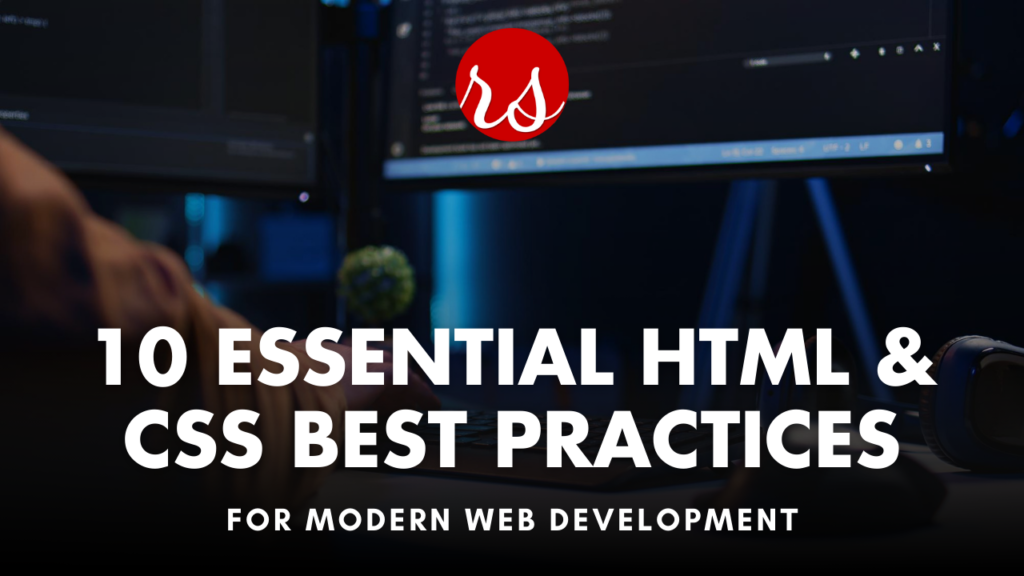Want to build fast, accessible, and SEO-friendly websites? Master these 10 essential HTML & CSS best practices to create a modern, maintainable, and high-performance web experience.
📌 Introduction
In today’s fast-paced web development world, writing clean, efficient, and SEO-friendly code is essential. Whether you’re a beginner or an experienced developer, following best practices in HTML and CSS can make your websites more accessible, performant, and maintainable. In this post, we’ll explore 10 must-follow best practices to take your frontend development skills to the next level.
1. Use Semantic HTML for Better Accessibility & SEO
✅ Good Example:
<article>
<h2>Blog Post Title</h2>
<p>Blog post content...</p>
</article>❌ Avoid This:
<div class="article">
<h2>Blog Post Title</h2>
<p>Blog post content...</p>
</div>🔹 Why? Semantic elements like <article>, <section>, and <header> improve SEO, accessibility, and code readability.
2. Keep Your HTML Clean & Organized
- ✔️ Indent your code properly
- ✔️ Use meaningful class names & IDs
- ✔️ Avoid unnecessary divs (
divitis)
Example:
<!-- Good Practice -->
<section class="feature-section">
<h2>Our Features</h2>
<p>Explore the latest features of our product.</p>
</section>3. Optimize Images for Performance
- Use modern formats like WebP instead of PNG/JPEG
- Use
srcsetfor responsive images - Lazy load images using:
<img src="image.webp" loading="lazy" alt="Optimized Image">4. Write Maintainable & Reusable CSS
- ✔️ Follow BEM Naming Convention
- ✔️ Use CSS Variables for Consistency
- ✔️ Organize CSS with proper comments
Example:
/* Variables */
:root {
--primary-color: #3498db;
--font-main: 'Inter', sans-serif;
}
/* BEM Naming */
.card__title {
font-size: 20px;
font-weight: bold;
}5. Use Flexbox & Grid Instead of Floats
Example (CSS Grid):
.container {
display: grid;
grid-template-columns: repeat(3, 1fr);
gap: 20px;
}6. Ensure Mobile-First & Responsive Design
Start with mobile styles first and scale up using media queries:
/* Mobile-first approach */
.container {
width: 100%;
}
@media (min-width: 768px) {
.container {
width: 80%;
}
}7. Optimize Your CSS for Performance
- Minify CSS files for faster loading
- Use
will-changefor animations - Avoid excessive use of
!important
Example:
/* Good Practice */
.button {
transition: all 0.3s ease-in-out;
will-change: transform;
}8. Improve Website Performance with Lazy Loading & Minification
- Use CSS & JS Minification
- Implement lazy loading for images & iframes
- Reduce HTTP requests with CSS sprites
Example (Lazy Load iFrame):
<iframe src="video-url" loading="lazy"></iframe>9. Accessibility Best Practices (A11Y)
- Always use alt attributes for images
- Ensure proper color contrast
- Use ARIA attributes where needed
Example:
<button aria-label="Close Menu">✖</button>10. Test & Validate Your Code
- ✔️ Use Lighthouse for performance & accessibility testing
- ✔️ Validate HTML at W3C Validator
- ✔️ Use CSS Linters like Stylelint
📌 Conclusion
By following these 10 best practices, you’ll write better, cleaner, and more efficient HTML & CSS. Implement these techniques in your projects to improve performance, SEO, and user experience.

